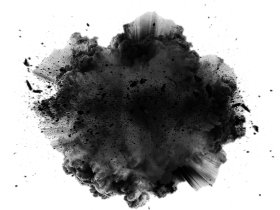Download top and best high-quality free Texture PNG Transparent Images backgrounds available in various sizes. To view the full PNG size resolution click on any of the below image thumbnail.
License Info: Creative Commons 4.0 BY-NC
Texture is an important element in art and design that aids in the creation of a visually appealing and tactile experience for the viewer or user. It’s the sensation perceived through touch or the appearance of an object’s surface and is essential in creating an emotional connection between the creator and the audience. Texture, in the context of creative works, includes not only the physical touch of an object but also the visual impression it has on the viewer.
The Role of Texture in Art and Design
Texture can play a pivotal role in the composition of a visual artwork or design. It’s one of the key elements that contribute to making a piece of art stand out and feel more engaging. A well-placed texture can create a sense of depth, contrast, and visual interest in an otherwise bland piece of art.
Adding texture to an artwork or design can also evoke an emotional response from the viewer. For instance, a rough and jagged texture can convey a sense of danger or ruggedness, whereas a soft and smooth texture can evoke feelings of comfort and tranquility. This effect can be further enhanced when the texture is combined with other elements such as color, form, and composition.
The Different Types of Texture
Texture can be classified into two types: tactile texture and visual texture.
Tactile Textures
Tactile texture is perceived through touch. It’s the physical quality of a surface that can be felt when a person runs their fingers over it. Tactile textures include rough, smooth, bumpy, prickly, sticky, and coarse surfaces. Examples of tactile textures in visual art include the raised brushstrokes in a painting, the rough surface in a sculpture, or the smooth surface of a polished stone.
Visual Textures
Visual texture is perceived through sight. It’s the illusion of texture created by an artist or designer to create a tactile sensation without the actual physical texture. Visual textures include patterns, lines, dots, stripes, and other geometric shapes. Examples of visual textures in visual art include the intricate designs in a quilt, the dots in a pointillist painting, or the stripes in a zebra.
Using Texture in Art and Design
Texture is not only important in creating a visually appealing and tactile experience for the audience, but it’s also a useful tool for the artist or designer to convey specific messages and emotions in their work. Here are some ways texture can be used in art and design:
Create Depth
Adding textures with varying degrees of depth can create a sense of three-dimensionality in a 2D artwork or design. By layering textures in the foreground, middle ground, and background, an artist or designer makes the artwork or design more visually engaging and dynamic.
Add Contrast
Texture can also be used to create visual contrast in an artwork or design. Contrasting textures can draw the viewer’s attention to specific areas of the composition, highlight important elements, and create depth and complexity in the artwork or design.
Evoke Emotions
As mentioned earlier, texture can evoke specific emotions in the viewer. Incorporating textures that align with the message or emotion you want to convey in the artwork or design can help you achieve a more impactful and memorable artistic expression.
Reinforce the Theme
Texture can also be used to reinforce the theme of an artwork or design. For example, if the subject of the artwork is the rough life of a homeless person, a rough and jagged texture can strengthen the emotional impact and message of the artwork.
Texture is a vital element in art and design that can greatly impact the success of a visual work. Understanding the role and types of texture can help artists and designers use texture effectively to create visually and emotionally engaging artworks and designs. Every texture choice must be intentional and must support the message and emotion the artist or designer intends to convey in the work.
Download Texture PNG images transparent gallery
- Texture PNG Pic
Resolution: 1280 × 1280
Size: 199 KB
Image Format: .png
Download
- Texture PNG Picture
Resolution: 1024 × 925
Size: 924 KB
Image Format: .png
Download
- Texture PNG
Resolution: 2500 × 2262
Size: 1123 KB
Image Format: .png
Download
- Texture Transparent
Resolution: 252 × 230
Size: 2 KB
Image Format: .png
Download
- Texture
Resolution: 651 × 365
Size: 279 KB
Image Format: .png
Download
- Texture Background PNG
Resolution: 300 × 300
Size: 39 KB
Image Format: .png
Download
- Texture No Background
Resolution: 1200 × 675
Size: 1097 KB
Image Format: .png
Download
- Texture PNG Background
Resolution: 500 × 375
Size: 201 KB
Image Format: .png
Download
- Texture PNG Clipart
Resolution: 1775 × 2048
Size: 299 KB
Image Format: .png
Download
- Texture PNG Cutout
Resolution: 849 × 600
Size: 147 KB
Image Format: .png
Download
- Texture PNG File
Resolution: 800 × 800
Size: 341 KB
Image Format: .png
Download
- Texture PNG Free Image
Resolution: 315 × 315
Size: 78 KB
Image Format: .png
Download
- Texture PNG HD Image
Resolution: 720 × 720
Size: 319 KB
Image Format: .png
Download
- Texture PNG Image File
Resolution: 315 × 315
Size: 78 KB
Image Format: .png
Download
- Texture PNG Image HD
Resolution: 3264 × 1084
Size: 547 KB
Image Format: .png
Download
- Texture PNG Image
Resolution: 960 × 1280
Size: 789 KB
Image Format: .png
Download
- Texture PNG Images HD
Resolution: 800 × 600
Size: 671 KB
Image Format: .png
Download
- Texture PNG Images
Resolution: 800 × 600
Size: 60 KB
Image Format: .png
Download
- Texture PNG Photo
Resolution: 1993 × 2001
Size: 287 KB
Image Format: .png
Download
- Texture PNG Photos
Resolution: 280 × 210
Size: 71 KB
Image Format: .png
Download



















